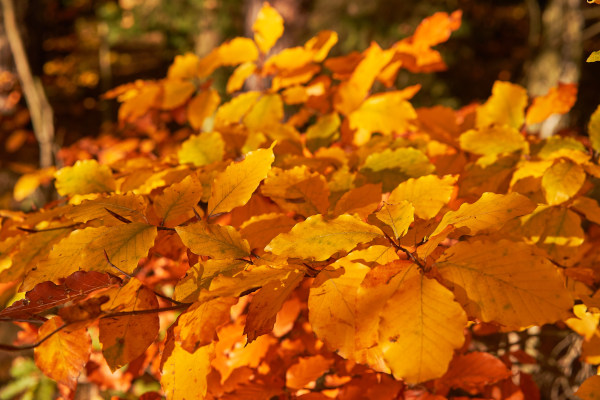How to grow Fagus
Most people would know this stately tree by its common name ‘Beech’. The oldest Beech tree is approximately 400 years old!
Native to Eurasia and North America. There are 10 species within the Fagus genus most of which are available in Asia and not suitable for our climate. However there are many cultivated varieties of our ‘European Beech’ Fagus sylvatica that offer different coloured- even variegated leaves as well as different growth habits to suit most modern gardens too.
Fagus make large handsome trees when fully grown. Their growth rate is reasonably slow 30 – 60cm per year with trees taking over 50 years to reach heights of 25m /82 feet. So don’t be afraid that this one will get too big and out of control! You’ll have plenty of time to prune it. Fagus can be grown as individual specimens or as a decorative hedge.
Fagus are deciduous trees typically with smooth grey bark and oval standard mobile phone sized leaves. The leaves tend to have thick veins, the lamina between the veins changes to coppery orange brown in autumn. As autumn progresses to winter the leaves crinkle remaining on the tree throughout most of the winter being replaced as new growth begins – a process called marcescent. This is most common on lower branches and trimmed hedgerows- maybe natures own way of protecting fresh bud growth from deer or frost.
During April and May inconspicuous tassel like male catkins hang from long stalks. Female flowers grow in pairs surrounded by a cup. Note- male and female flowers grow on the same tree called monoecious. The cup becomes woody once pollinated and a prickly case encloses three triangular shaped beech nuts known as beechmast which is eaten by wildlife such as deer and wild birds.
Beech wood is a hard wood ideal for indoor furniture making being dense, resistant to compression and gouging and is better for paper pulp than most other trees. In fact Beech wood tablets were commonly used for writing prior to the invention of paper. The old English word for tree ‘boc’ gave us the modern word ‘book’.
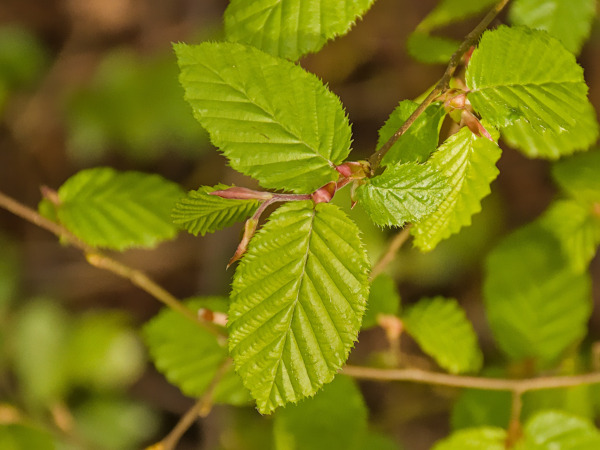
Zantedeschia is a genus of flowering plants from the family Araceae and is native to southern Africa. With a rich history dating back to the Ancient Romans, these deciduous or semi-evergreen perennials have been used as a symbol of celebration. Zantedeschia was Named after Professor Giovanni Zantedeschia, an Italian botanist.
There are two main forms of Zantedeschia: hardy and tender. Hardy forms of the plant can be grown outdoors, enjoy moist soil and full sun or partially shaded conditions - these are known as Arum lilies. Tender forms of Zantedeschia prefer being grown in containers or pots and should be brought inside over the winter - these are known as Calla lilies.
With tuberous flora in all colours from whites, yellows and oranges to deep reds and purples, Zantedeschias are not to be overlooked in any garden, as long as they have sufficient sunlight to grow in.
Ready to learn more about growing Zantedeschia? Read on for all there is to know...

Key Information
Soil pH
Position
Hardiness

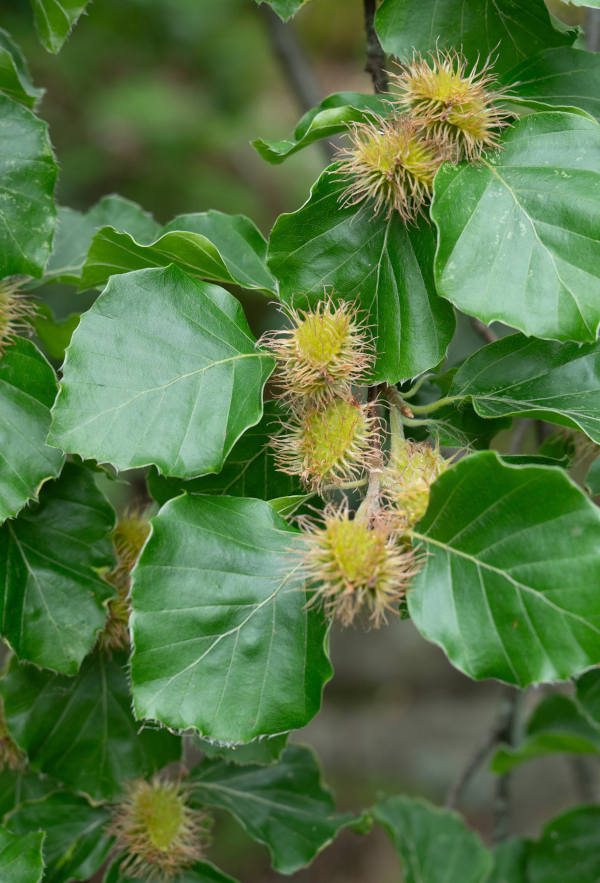
Where & when to plant Fagus
Here we list out the most popularly cultivated species and hybrids in the U.K.
| Species | Common name |
HARDY – cold winter (H6/ -15°C to -20°C) Grow anywhere in the UK | Fagus sylvatica | European Beech Common Beech |
Fagus orientalis Lipsky | Oriental Beech | |
Fagus grandiflora | American Beech |
Position - Full Sun or Part Shade in a fairly sheltered location.
Soil - Moist free drained soil of acidic, neutral, alkaline, tolerant of chalk, clay, loam, sand.
Flower - Spring
Fagus can be planted all year around when purchased grown in pots. Bare rooted plants are best planted in late winter or early spring when the ground is not frozen or waterlogged.
If container grown plants are planted out during the active summer growing season make sure that they are watered regularly until the plant has settled into its new location. Water at soil level rather than the foliage.
Choose the location carefully as a beech tree is a long-term investment and some varieties can get large (eventually) although their roots systems are quite shallow and non-invasive.
Beech will grow anywhere in any location except areas prone to flooding or excessively dry soils. Leaf colour is stronger in light sunny sites particularly on purple leaved forms. Avoid frost pocket areas which can damage developing shoots in spring.
Try growing as a majestic solo plant within a garden border, as a hedge, a weeping variety in a container or as a focal point in the lawn.
How to plant Fagus
- For planting in the garden, dig the soil area removing any large stones and weeds and breaking up any lumps. Mix in some organic matter, ideally leaf mould, though manure or garden compost are also fine. Rake level and firm with your heels. Rake level again.
- Water plants well and allow to drain before planting.
- A good tip is to dig a hole twice the size of the root-ball. Fill with water and allow to drain before placing in the plant which is especially good for summer plantings.
- Remove the plant from its pot placing the plant in the hole, ensuring the top of the root ball sits level with the surface of the soil. Too low and the plant may rot, too high and the roots can dry out. If bare root hold the plant at soil surface level allowing roots to dangle into the hole. Ensure the soil level mark on the plant stem is at the same level as the surrounding soil in its new location.
- Backfill with soil and firm in gently with your foot.
- Soak soil well with water.
- Mulch around the base with well-rotted organic matter.
- Apply a tree stake and tie to secure the tree whilst it establishes.
- For planting in containers, first choose an appropriately sized pot around 5-7cm larger than the rootball of your plant (you’ll need to gradually increase the pot size every few years). Always ensure there are plenty of drainage holes in the bottom.
- Use a good quality potting compost if you have it and mix with garden soil. Mix in some horticultural grit and, if not already present (check the labelling on the bag) some slow-release fertiliser granules.
- Start by partially filling the pot with compost; enough so that when placed on it the upper surface of the root ball is about 3cm lower than the top of the pot.
- Fill around the plant with compost, firming down with your fingers then adding a little more so it is held tight.
- Pick up the container and lightly tap on the potting bench or ground a few times to help further settle the compost around the plant.
- Soak well with water.
- A mulch with horticultural grit will look attractive and help to prevent a ‘cap’ or crust forming on the top of the compost (something container plants can suffer due to the artificial nature of their watering).
- For planting a hedge prepare the soil as you would for planting in the garden. Select bare root plants available in autumn and early spring for best value.
- Position the hedge to allow growing room I suggest 90cm / 3ft from the boundary line. Use a string and line marker to clearly keep the distance even from the boundary.
- Plant as per planting in the garden along the line marker with each plant at 60cm intervals.
- If space allows, Beech are quite slow growing so would advise planting in a double row to make a thicker hedge quicker. Therefore put your marker line at 1.2m/4ft from the boundary. Plant in a staggered zig zag pattern with plants 60cm/2ft apart planting each plant 30cm/1ft from the marker line.
- After planting carefully tip the top out of each plant so all plants are approximately the same height. Take out the top third from all leading shoots. Repeat in year 2 if necessary. This will encourage all side shoots to develop making you a thicker hedge right from the base of the plant.
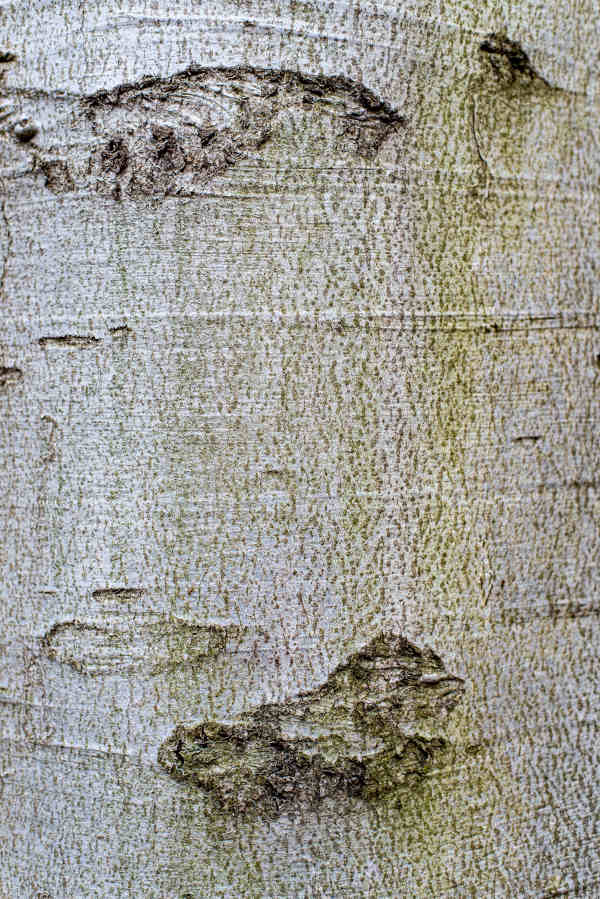
What to plant with Fagus
Outdoors, plant alongside plants with different shaped or coloured foliage as a contrast.
Try Allium, anemone, Ferns and Grasses, hydrangea, hyacinth, Roses, symphyotrichum (asters), Tulip, and Viburnum.
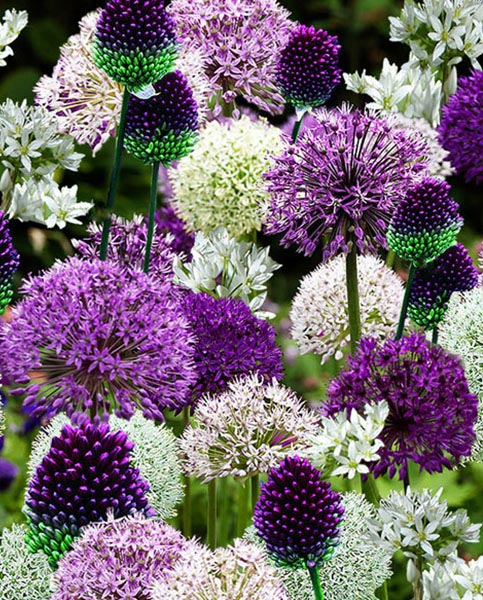
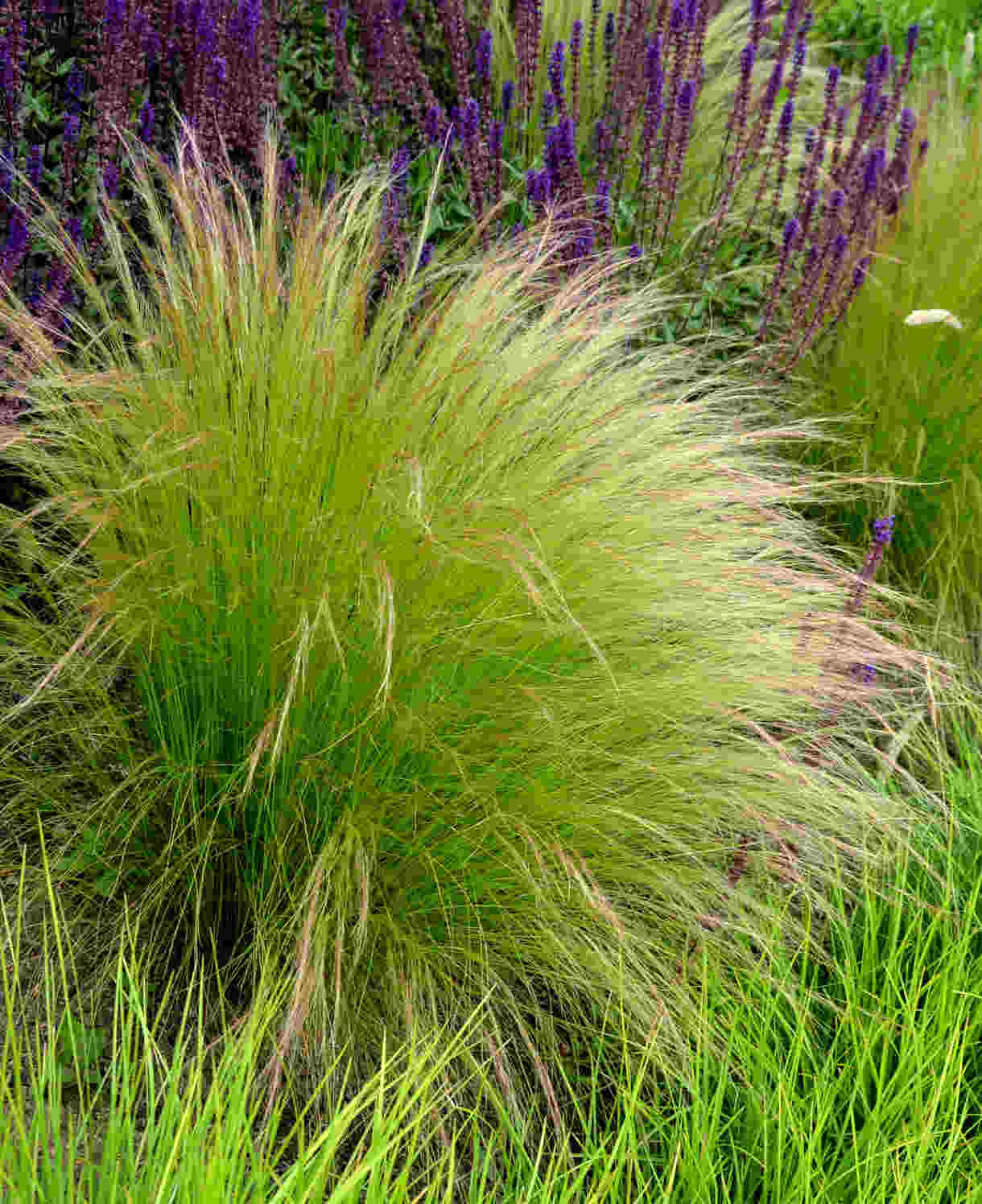
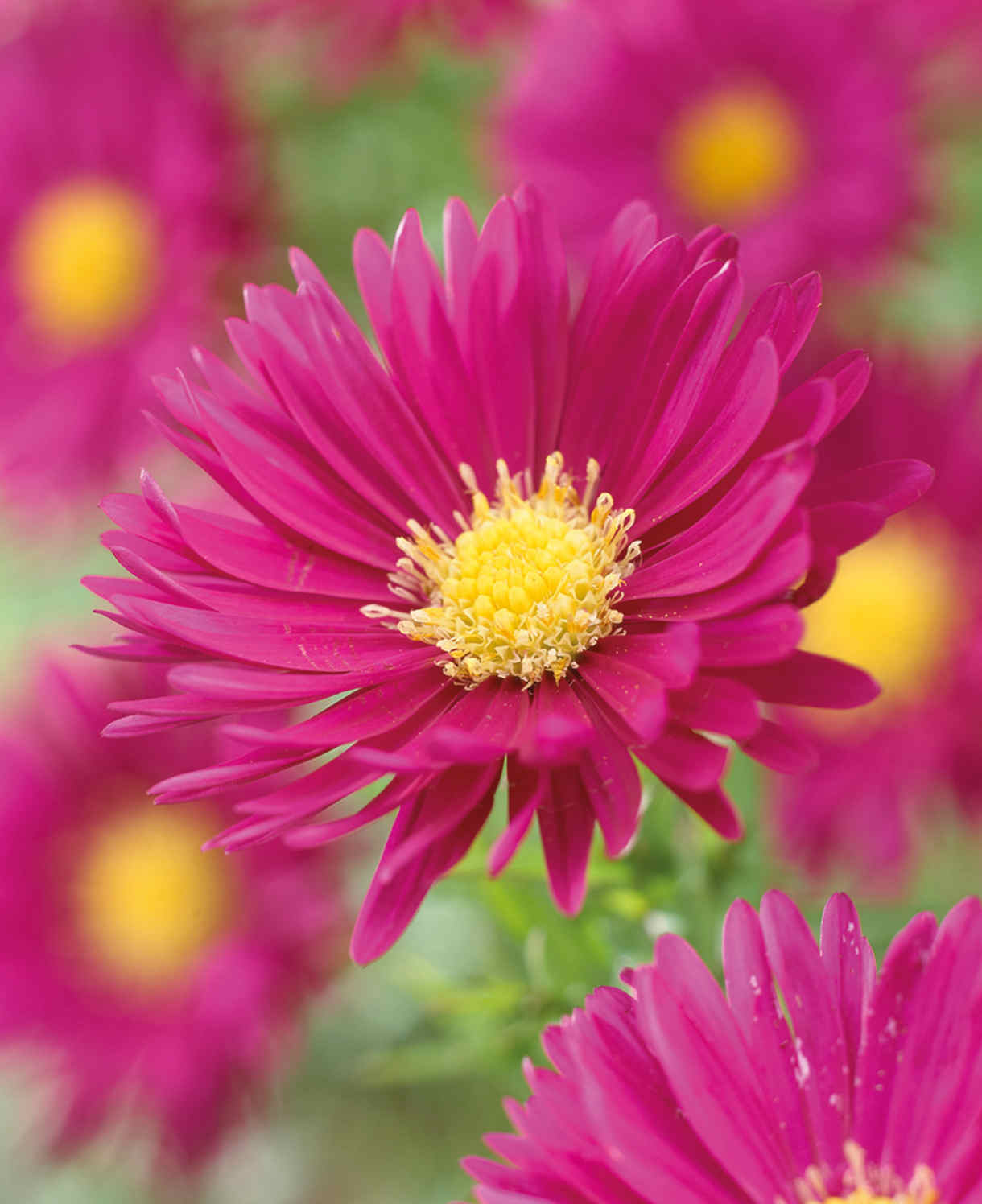
How to care for Fagus
Pruning and Deadheading
There is no need to deadhead a Fagus beech tree. After flowering the inconspicuous flowers will fall off. Any beechmast nuts that form will also drop to the floor.
Fagus trees fall into R.H.S. Pruning Group 1
Essentially there is no need to prune a beech tree. Only do so to keep its size in check and to remove any damaged or unwanted branches. Prune between Autumn and early Spring.
Pruning Hedges
Newly planted hedges trim growing tips and side shoot tips to encourage bushiness in early August. Prune the top when it reaches required heigh. The ideal shape of a beech hedge is a A shape. 1m width at the base narrowing as you go towards the a flat top to allow plenty of sunlight to reach the lower leaves.
Established Hedge Trim your beech hedge each August to keep it to the size you want. This late summer trimming allows the hedge to retain its recent flush of new leaves over the winter in a brown, autumnal state, providing year-round screening. If you miss pruning in August just trim the following spring instead This late summer trim
Overgrown hedge Don’t be afraid to cut back hard an overgrown beech hedge in February while it is still dormant. If you need to reduce the height or sides by half or more, it’s best to stagger pruning over two seasons rather than doing it all at once. Cut one side and the top in the first year, leaving the other side to the second year. If your hedge is slow to regrow after the first prune, postpone the second cut back for a further twelve months.
Watering
Fagus enjoy moist yet free drained soil. On planting outside, they benefit from a good watering in on planting and then regular soakings until established. After this they should need watering only in very hot, dry conditions. Allowing the top few centimetres to dry out between soakings is a good rule of thumb to avoid overwatering. To check this, wiggle your finger down into the soil until you hit a cool, damp bit.
Feeding
On healthy, fertile soil, a mulch of well-rotted organic matter (i.e., a layer of leaf mould, manure, or garden compost applied to the soil around the plant) should provide enough nutrients for your fagus. This has the added benefit of suppressing weeds and locking in moisture. Mulch when planting, and then again each spring.
If you garden on poor soil or your fagus looks in need of a boost, or simply you wish to encourage slightly faster growth apply a granular general purpose feed to the surface of the soil and lightly working in can reap benefits. This is known as a top dress and should be done when you’re mulching in spring – first apply the feed, then cover with the mulch.
Container-grown plants are different as they rely solely on the gardener for nutrition. Get off to a flying start by making sure you use a good quality compost with slow-release granules mixed in. These generally provide nutrients for around 6 to 8 weeks, after which you’ll need to apply a liquid feed every 2-3 weeks until the end of the growing season (i.e., September-ish).
Remember to repot your fagus every few years into a slightly larger pot using fresh compost. In-between, it’s worth removing the top few centimetres of compost each spring and replacing with a fresh mix of compost and slow-release granules.
Cold Protection
Fagus are hardy garden trees and do not need protection. As previously mentioned they prefer to be planted away from locations prone to late frosts which can nip the developing buds.
Pests and Diseases
Fagus are rarely prone to pest or disease.
Wooly beech aphid rarely leave much damage. They are shown by fluffy white patches on the leaf underside. Within this fluffy cover are pale yellow aphids 2mm long which suck sap from foliage. This can leave a sticky sugary substance called honeydew on the leaf.
Treatment is to encourage aphid predators to the garden such as ladybirds, ground beetles, hoverflies, parasitoid wasps an earwigs. You could try washing off with a hose pipe. But rest assured this pest is perfectly natural and all part of a healthy garden ecosystem.
Rabbit and deer need a physical barrier protection to stop them eating the bark of trees in cold weather.
Honey fungus This is a common disease which effects the base of the plant where visible signs of white mould can be seen.
Beech Heart Rots a fungal pest called bracket fungi Ganoderma applanatum and G. australe. The first external symptom is bracket fungus (inedible mushroom) growing on the trunk. Visible weakening and die back of the branches within the crown of the tree. By the time fungus is seen on the external surface much damage has already been done within the heartwood of the tree.
Internal damage is usually only visible one the tree is cut. A white or brown rot in the heartwood structurally weakens the tree. The tree becomes hollow and weakness ensues leading to breakage or tree topple. Unfortunately there is little you can do to prevent bracket fungi. Trees have an inbuilt ability to limit the spread by using its own natural chemical barriers. Create good airflow around the tree by removing competition from nearby plants, feed with an annual application of granular feed which may help boost the trees immune system. Gardeners are legally responsible for their trees and may be liable for prosecution if damage or injury results from falling timber.
How to propagate Fagus
The recommended way to propagate Fagus is by seed.
Collect ripe beech nuts (Beechmast) in late summer or autumn.
Ensure the seeds are stored clean and dry. Most reliable results are from Autumn sowings which will give the seeds a natural winter cold period to stratify the seeds ready for spring growth.
- Soak seeds overnight in cool water prior to sowing.
- Fill a 9cm pot with good quality seed compost. Level and firm with the base of another pot. Water well.
- Individually push the seeds double their height into the compost. Sow 2 or 3 seeds in each pot.
- Cover with a plastic food bag held in place with an elastic band.
- Place the 9cm pots in a cool, light, sheltered spot or cold frame checking periodically to see if compost is moist and for signs of growth in spring.
- Protect against pests such as slugs, and mice.
- Germination should take place in spring.
- Once seedlings are large enough to handle they can be pricked out individually and grown on.
Grafting. Many cultivated named varieties are grafted. Named forms of beech can be kept true to type by grafting. In late winter or early spring, graft young wood from the desired form (called the ‘scion’) onto a two or three-year old Fagus sylvatica sapling. This requires more skill than seed sowing.
* Many plants carry Plant Breeders Rights and cannot be propagated for commercial purposes.
Common Fagus questions
How fast does Fagus grow?
Once established beech grow about 30cm-60cm a year.
Are Fagus Beech trees poisonous?
The beechmast nuts produced in summer are not suitable for dogs. They can cause severe gastric discomfort and are regarded as harmful if eaten by dogs.
